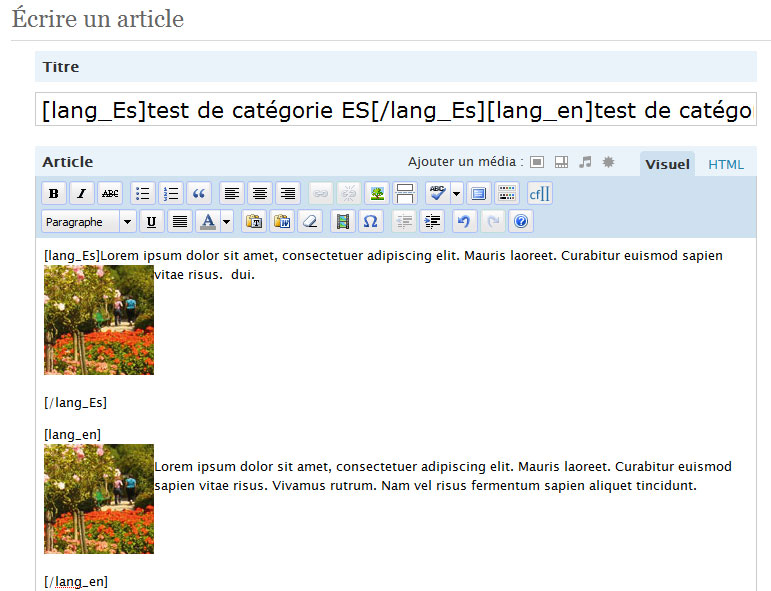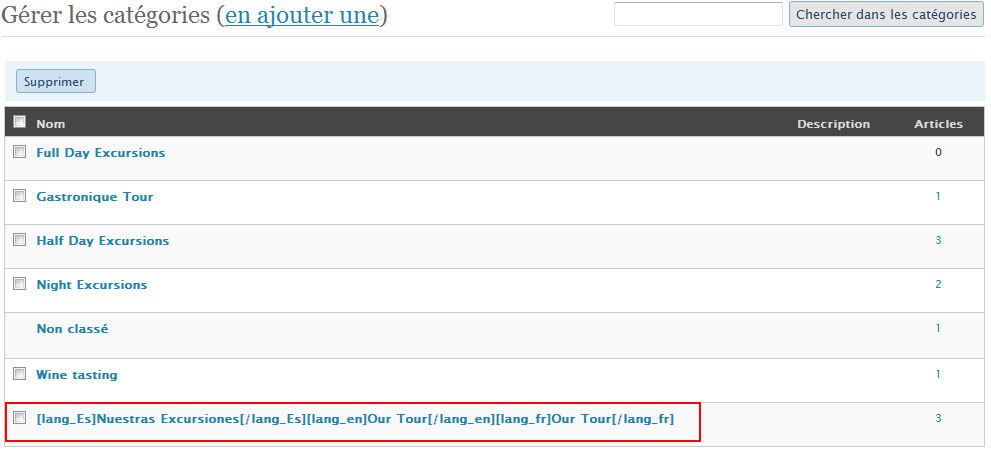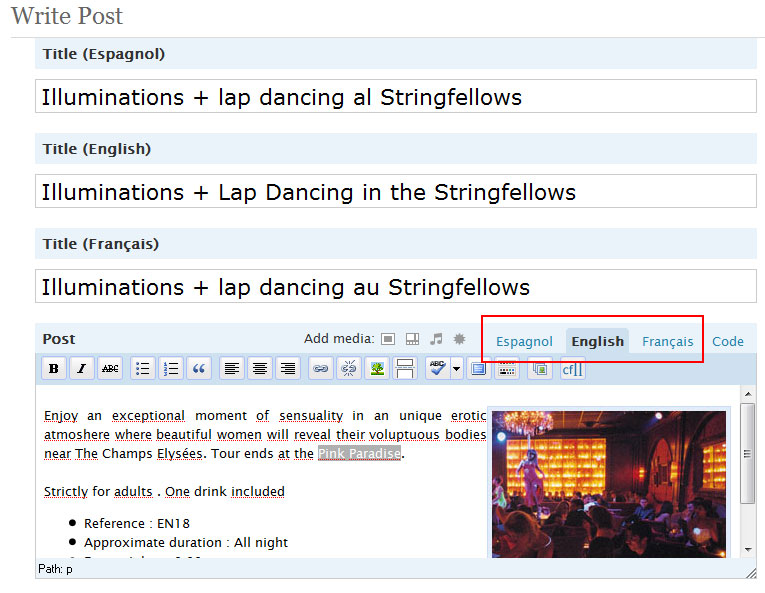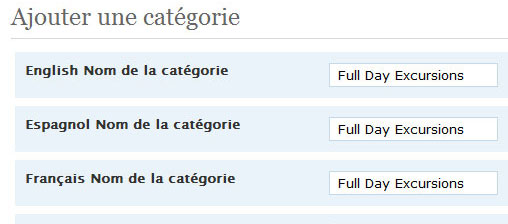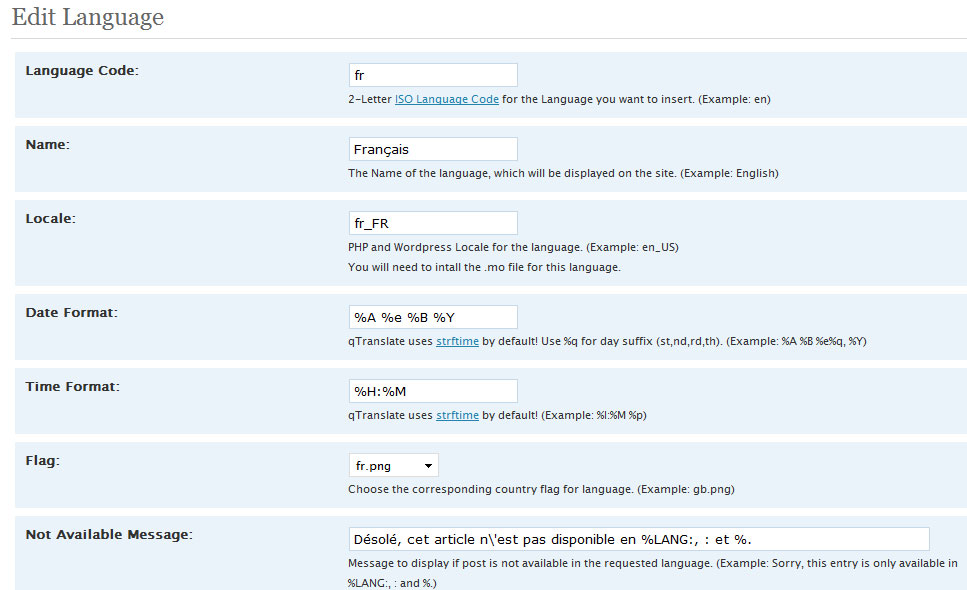July 22nd, 2008Multilingual vs Translator Plugins for WordPress
Websites in English only count for 30% of the total websites on the internet. Source: World Internet Statistics. The top 3 languages used on the web (english, chinese, spanish) account for 56% of the total internet users. For this reason, more and more websites are offering their content in various languages to grow their readership and market an international branding image.
You have a blog using WordPress and you are looking for solutions to offer your content in various languages. You have two options; multilingual translation plugins or automatic translation plugins.
Multilingual Translation Plugins require you to manually translate your content into your chosen languages. Once you have translated your text, you simply input it into the corresponding boxes inside your wordpress post and the plugin takes care of the rest.
Automatic Translation Plugins do the hard work for you. They will use online translators like Google Translator to automatically translate your text and offer the new content inside your blog. These translation plugins are 100% automatic and save you loads of time but automatic translation is far from perfect! I believe they are sufficient for simple texts. People should understand the correct meaning of the text but they are limited!
For serious blogs and websites, you have to use a Multilingual Translation Plugin. Get your text translated by a professional and make sure the translations are coherent.
Multilingual Translation Plugins
Polyglot WordPress Plugin
Polyglot plugin is certainly the most popular but not as good as QTranslate. It was developed by Martin Chlupac. He is one of the first developers to work on multilingual wordpress.
Like any regular wordpress plugin, it installs in the directory \wp-content\plugins\ and must be activated in the administration interface. You may now start to create your wordpress blog into a multilingual site. Do not forget that some parameters should be modified inside the file polyglot.php file. For people allergic to code, do not be scared, you just have to add the variable “$polyglot_settings”.
How to setup the PolyGlot Installation:
Example for a site in french / English:
$polyglot_settings['flags']['fr'] = 'fr.png';
$polyglot_settings['flags']['en'] = 'gb.png';
Here we chose the correct image to display the corresponding language. All flags images are in the directory “polyglot_flags”.
$polyglot_settings['time_format']['fr'] = 'G:i';
$polyglot_settings['time_format']['en'] = 'g.i a';
$polyglot_settings['date_format']['fr'] = 'j F Y';
$polyglot_settings['date_format']['en'] = 'Y-m-d';
Here we chose the date format to adopt for each language. (hours and date). By default if you do not set this parameter, the Polyglot plugin will chose the date format you have set inside WordPress. Personally I did not use this parameter.
$polyglot_settings['text_is_missing_message'] = '[lang_en]Sorry, but this post is not available in English[/lang_en][lang_fr]Désolé, mais cette article est indisponible en Français.[/lang_fr]';
And voila it is almost finished. Now you have to write your articles in the various languages.
You must tag your text with the different languages. Example of the article’s title in French and English:
[lang_en] This is my title post[/lang_en][lang_fr]C'est le titre de mon article en Fr [/lang_fr]
You must do the same for the text. If you import media in your articles, they must also be duplicated for each language.
Conclusion – Polyglots plugin for WordPress works well, it is not too complicated to setup, but it is lacking a graphical layer that would make it more user-friendly. If you want a fully bilingual site, you must also translate your categories. On the following picture can see the kind of horror that Polyglot will generate inside your backoffice.
With more than 2 languages, it is not recommended to use PolyGlot. If you run your wordpress with several authors, I can not imagine a consistent method for managing the posts by various authors in mutlilingual content. Some planning is necessary.
PolyGlot Plugin Links :: Official
Qtranslate WordPress Plugin
Qtranslate is better than Polyglot because of its graphical interface which makes it very easy to use. The main quality of this plugin is its ergonomics which is designed for easy input of articles in several languages.
To display your flag, just add the following code inside your template files :
<?php echo qtrans_generateLanguageSelectCode('image'); ?>
First advantage of QTranslate plugin, various tabs will appear depending on the language that you have selected. And this is where QTranslate exceeds Polyglot because tabs are easy and clear to users.
Second advantage is the management of categories. Once in your category admin panel, you just need to fill in the category names in different languages.
Conclusion – QTranslate is practical and really optimized for WordPress use. I highly recommend the use of this plugin for Multilingual wordpress blogs.
You can see my own blog using QTranslation WordPress Plugin at Easy Dream.
QTranslate Plugin Links :: Official :: WordPress.org
Automatic Translation Plugins
Global Translator WordPress Plugin
Global Translator for WordPress is the ultimate automatic translation plugin on the market. It can automatically translate your text in English, French, Italian, German, Portuguese, Spanish, Japanese etc… It installs very easily and takes care of all configurations so all you have left is to add the php code inside your template sidebar or header to tell wordpress where the language flags should appear.
Global Translator is SEO friendly as it add an extra directory inside the URL to point towards the language translation. ie: yoursite.com/fr/ or yoursite.com/es/ …
The plugin uses a caching system so the same page does not need to get translated hundreds of times and you do not get banned from using the Online Translation Engines.
If you run a serious blog and need good quality translation, do not use any automatic translation plugins. The current online translators are not sufficiently high quality and your readers might have trouble understanding your article. Global Translator should only be used to roughly translate your text.
Global Translator Links :: WordPress.org :: Official
Interesting Articles :: Translation and Multilingual WordPress Plugins @ Lorelle’s


